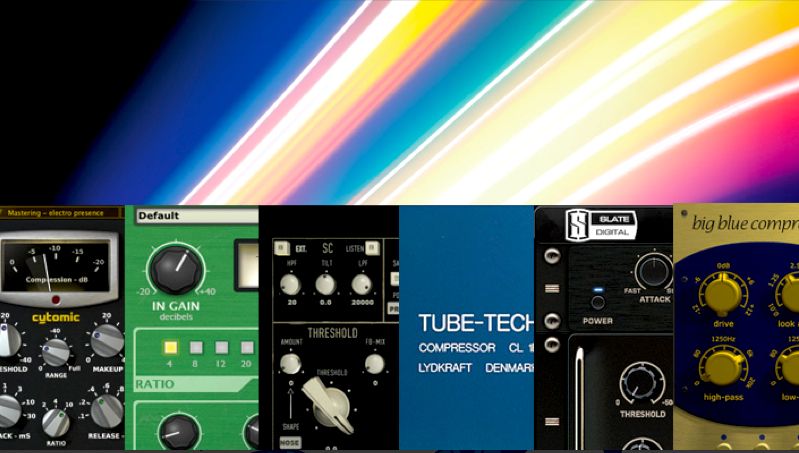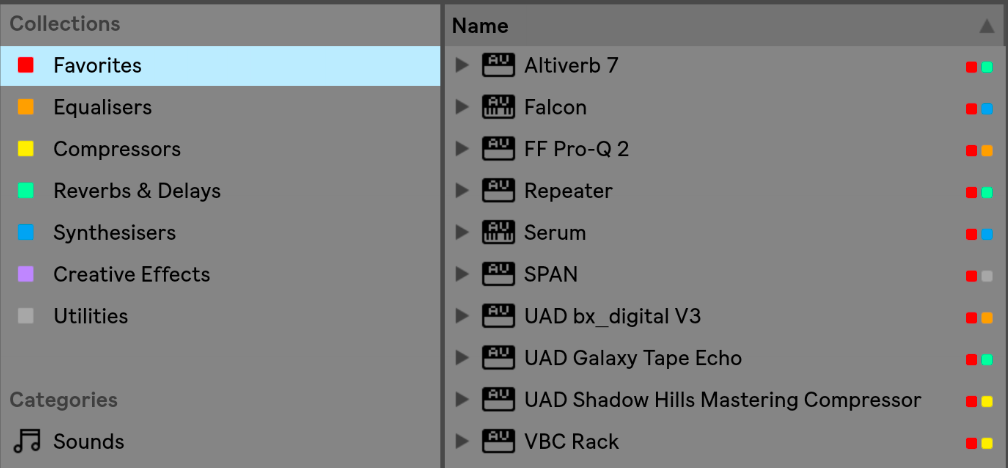- Click on the “Plug-Ins” tab on the left, and at the top, select “Rescan Plug-Ins.” From there, Ableton will automatically locate the Serum Plug-In, and add it to your Ableton Library. Go to “Plug-Ins” under categories on the left hand side and open Serum. This process will be the same for adding all VST Plugins into your Ableton.
- Install your iZotope plugin from the Splice desktop client. To get your iZotope plugin up and running in Ableton you need to check Ableton's AU/VST settings.
- Activate either the Custom folder or System folder (VST 3 only) as required. Note: only add discrete folders which contain VST plug-ins. Adding entire drives or system folders may crash Live. Make sure that the folder contains only VST.dll files. Other system files can use the.dll extension too, but they may crash Live if included in the.
- Open the Ableton Live application. Click the 'Options' menu and select 'Preferences.' Click the 'Files/Folders' section of the window that appears. Click the button next to 'Use VST Plug-in Custom Folder' to toggle it to 'On.'
- How To Add Vst Plugins To Ableton Live Plugins
- How To Add Vst Plugins To Ableton Live 10
- How To Install Vst Plugins Ableton Live 10
- How To Add Vst Plugins To Ableton Live Plugin
- How To Add Vst Plugins To Ableton Live Free
In Ableton Live, now go to Options Preferences Plug-Ins Plug-In Sources (at the bottom). Make sure 'Use VST Plug-In Custom Folder' is set to On. Make sure that the VST Plug-In Custom Folder is set to the same file path where you installed the Plug Ins, C: Program Files(x86) VSTPlugins or C: Program Files VST Plugins (depending on if you.
If you want to use plug-ins in Live, they need to be set up first whether it’s VSTs or Audio Units (Mac only). It’s an easy and quick process when you know-how. This tutorial will guide you step by step through it.
A cool new reverb, a stylish delay, a few different synths, a realistic string section … To take your audio production and mixes to the next level, sometimes you have to look outside the box, to work inside the box. That’s where exciting third-party plugins often come in, which can help shape sound in creative and fun ways, and they’re a blast to experiment with. Although some plugins have separate versions, most of the time they have to be used within a digital audio workstation (DAW). But don’t worry, installing them is not that complicated.
When installing new plugins in Ableton Live, the first thing to know is that Live supports AU and VST formats. However, most of the time your plugin will fall under the VST format, as this is the case most often. Secondly, this is just a note to say that in our editorial style guide, we use the spelling “plugin”, but within the software, it can be “plug-in”. (If you get confused, you should know that they are the same thing.)
7 Steps To Install Plugins in Ableton
- First, download the plugin to your computer and install it.
- Once the plugin is installed, open Ableton Live.
- Go to the “Live” tab at the top left, and click “Preferences”.
- Click on the Plug-In section and make sure to activate “Use Audio Units”, “Use VST2 Plug-In System Folders” and “Use VST2 Plug-In Custom Folder”. If necessary, also turn on “VST3 Folders”.
- Close this window and go to the Plug-Ins tab on the left side. Your plugin should be listed under “VST”. If for some reason your plug-in doesn’t appear, follow the next step.
- Go to “Preferences” one more time.
- Turn off “Audio Units” and turn it on again. Click “Rescan” to explore the available plugins again. The reason your plugin might not appear yet is because Ableton Live might not have detected it yet. Give it time. If it still doesn’t work, you may want to reinstall it on your computer.
Browser tab for the most used plugins
If you’ve accidentally chosen a big folder as the VST custom folder, you can keep ALT pressed when starting Live. This will keep Live from scanning for plug-ins and you can then go into the Preferences > File/Folder to change it to the appropriate folder. Create a folder anywhere on your hard drive and name something like quick access. Now use the Ableton browser to navigate to the quick access folder. I have file browser tab 3 permanently to see the quick access folder as it is used a lot.
You will use this folder to collect all the commonly used presets and add-ons with just drag and drop files from the browser tab to another. Try going to the Live Device Explorer and dragging any Live Device Presets like an EQ8 Preset or a Preset Compressor to the Quick Access tab.
If you tried to drag and drop the live device onto itself (for example, the EQ8 device instead of a preset EQ8) you’ll notice that Live did not allow the operation. This is because the device and plug-in files cannot be moved, only the predefined files can. Therefore, the best solution is to save initialized presets from your favorite devices live to the Quick Access folder. If you want quick access to third-party plugins, create a live rack containing the plug-in, and then save the rack as a preset in the Quick Access folder.
Save default sets for multi-channel plugins

Many instrument plugins allow multiple outputs. Setting the input and output routing for each output is not automatic live as in some other hosts, but they do not once, and you will have to worry again.
Your system can achieve a higher level of performance using a multiple hard drive set up. In this article, we will provide an example that uses three drives, plus an additional backup drive. For the purposes of this article, the terms “drive” and “disk” are interchangeable.
System Disk
The system disk would ideally be a Solid State Drive (SSD) in this configuration.
Using such a drive will greatly improve the loading times of your applications, because of the drive’s superior speed in accessing data.
We recommend installing the Ableton Live application and all third-party plugins on this system drive. It is highly recommended to always keep at least 10% of free space on your system disk.

2nd drive – Samples and Libraries
The second hard drive in this configuration is used to store samples and sound libraries, including the User Library. For optimal performance this drive would be an SSD, or alternatively an HDD SATA 3 (7200 RPM). Please format this drive into your operating system’s native format to ensure the best performance possible. On Windows, this format would be NTFS. On Mac OS X, this would be HFS+ (Mac OS Extended).
If you are working with a desktop computer, the best choice would be to install this drive in your computer’s dedicated SATA slot.
How To Add Vst Plugins To Ableton Live Plugins
Should no slot be available, or if you work with a laptop computer, an external hard drive will suffice. Drive enclosures can also offer some speed benefits compared to a typical external drive, but this is a more costly and bulky solution, and is not always practical.
How To Add Vst Plugins To Ableton Live 10
If possible, use Thunderbolt or USB 3 drives for maximum transfer speed. USB 3 enclosures need to be plugged in to a USB 3 port to access full bandwidth capabilities. We recommend avoiding the use of external USB hubs.
How To Install Vst Plugins Ableton Live 10
Here you can check the best Plugin bundles in the market – Sweetwater
Have a good Mix!
Unlike other DAWs (FL Studio at least, which is what I use), Ableton Live allows you to choose only one custom VST plugin folder. This drives a lot of people nuts, especially when moving from another DAW to Ableton.
Fortunately, there is an easy solution- shortcuts! Here’s how to easily point to many VST folders from Live:
- Choose a folder or create one that you will to point to from Live later on. This doesn’t need to contain any plugins. Let it be an empty folder if you please. Let’s call it “Ableton VSTs” for this article.
- Now here’s the important step- create shortcuts of all your VST folders that you want tracked by Live and drop those shortcuts in “Ableton VSTs”. Rename these shortcuts to meaningful names (you’ll find out why ahead).
- Go to Preferences> File Folder and click on the ‘Browse’ button for “VST Plug-in Folder”, and browse and select “Ableton VSTs.
How To Add Vst Plugins To Ableton Live Plugin

How To Add Vst Plugins To Ableton Live Free
Live will scan all VST folders you have placed shortcuts to in the “Ableton VSTs” folder. Now, when you click on “Plug-ins”, you will notice the shortcut names as folders. Enjoy!